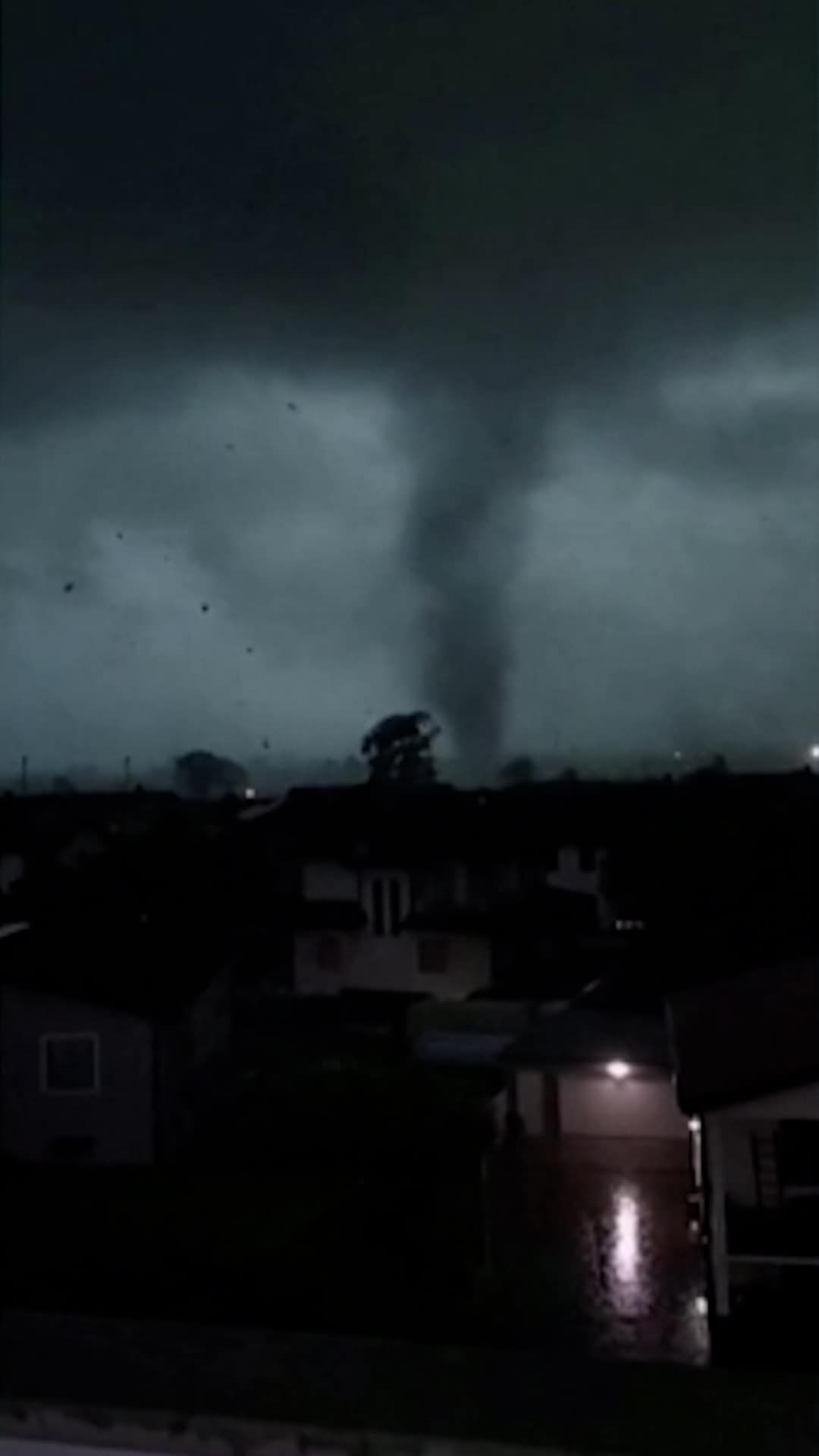Italy hit by tennis-ball-size hailstones after heatwave, officials say
Towns in northern Italy were hit by storms and hail on July 21 and 19. (Video: The Washington Post)
Listen 3 min Comment on this story Comment Gift Article Share
Parts of northern Italy were pummeled by giant hailstones larger than tennis balls this week, according to local officials, while one town’s streets were overtaken by an icy river — just days after the country experienced a scorching heat wave that broke temperature records in Rome. Wp Get the full experience. Choose your plan ArrowRight Videos shared on social media and local media showed large chunks of ice floating through the streets of Seregno, a town close to Milan, on Friday, while a mini tornado was seen in Milan. Firefighters in Milan said they had been responding to building damage and fallen trees in the aftermath of the storm, local media reported.
Earlier in the week, videos also showed loud lightning storms in Mantua in the Lombardy region of Italy, as giant hailstones beat the ground. Extreme winds and hailstorms also gripped Veneto, injuring about 110 people, according to the regional governor, Luca Zaia.
Advertisement
“The hail that fell was absolutely out of the ordinary, with balls of ice that in some cases had diameters of over” four inches, he told local media Friday.
The cold weather comes swiftly after a severe heat wave has been gripping much of central Europe this summer.
Although seemingly incongruous, this is a common occurrence with hail inherently a summertime phenomenon. It forms high above the earth in thunderclouds where the temperature is always below freezing, even during July.
Hail is “solid precipitation in the form of balls or pieces of ice,” and forms in thunderclouds when drops of water are continuously taken up and down though the cloud by updrafts (rising air) and downdrafts (sinking air), according to Britain’s Met office, the national weather forecaster.
The pieces of ice get larger over a period of time until the clouds can no longer hold them and they fall to Earth. They may melt slightly as they fall but they normally remain as balls, with diameters averaging around 0.2 to 2 inches — far smaller than some of the hailstones hitting Italy in recent days.
Near-record heat temperatures have plagued much of central Europe this month, with the mercury hitting above 105 Fahrenheit in parts of Italy. Elsewhere popular tourist attractions such as the Acropolis in Greece have been closed due to sweltering weather, which experts say is a consequence of climate change.
Forecasters have warned more heat waves could hit southern Europe this month, while parts of the United States and Asia are also contending with extreme weather.
In the United States, Nebraska, Colorado and Wyoming usually have the most frequent hailstorms, according to the NOAA National Severe Storms Laboratory. The largest hailstone so far recovered in the United States fell in Vivian, S.D., in 2010, with a diameter of 8 inches and a circumference of 18.62 inches — nearly the size of a volleyball — and it weighed 1 pound, 15 ounces.
Gift this article Gift Article
Source: The Washington Post


